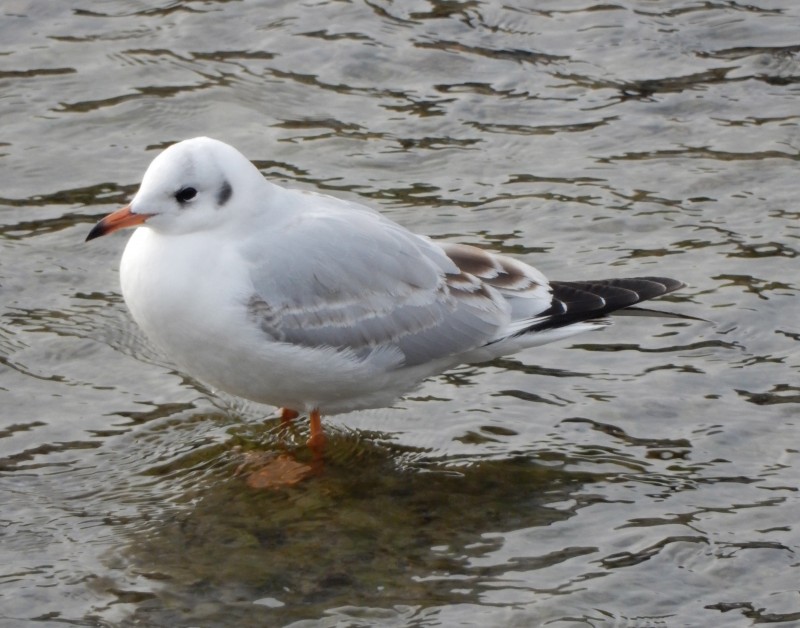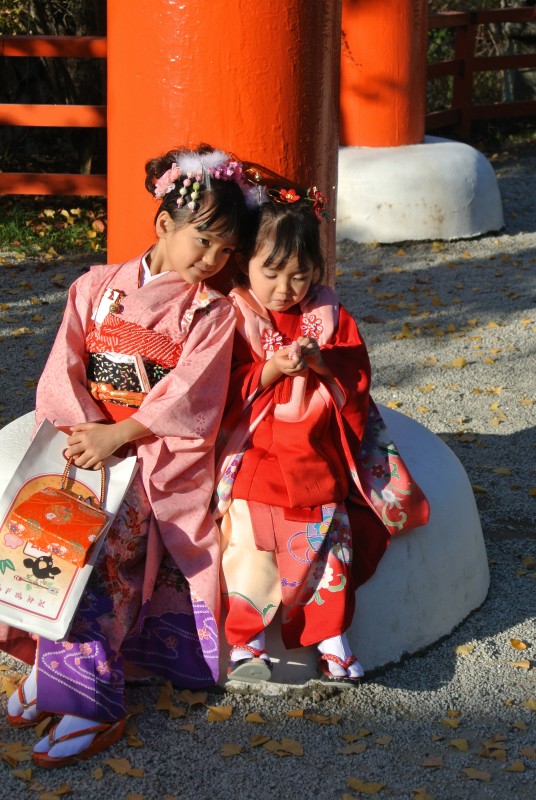
This is Part Nine of an ongoing series about the Shinto way of death, adapted with permission from an academic article by Elizabeth Kenney. It shows how traditional Shinto arrangements differ from the more prevalent forms of Buddhist funeral. Though the research was carried out in the 1990s and some of the information is dated, the fundamentals still apply. For the original article, see Elizabeth Kenney ‘Shinto mortuary rites in contemporary Japan.’
Departure of the coffin
This rite marks the departure of the deceased from the house (or funeral site) with a few brief rituals. If the wake is held at the house and the funeral somewhere else, then the departure rite will be conducted when the coffin moves from the house after the wake.
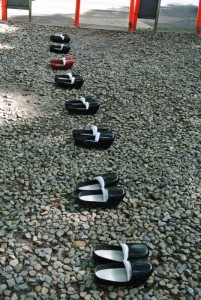
A pair of priest’s shoes may be placed near the coffin to indicate preparing to move
Banners with the name of the deceased are set up, and a protective sword is placed on top of the coffin. In addition, a pair of black wooden clogs (like those worn by Shinto priests) may be placed on a small table near the coffin.
The purpose of the rite is to inform the deceased that he will soon be moving from his house. The ritual activities are similar to those seen at the wake and funeral: offerings of food and tamagushi, prayers, and bows.
The procession
The coffin is taken out of the house and transported in a hearse to the crematorium (or, less commonly now, to the grave). Until rather recently, at both Buddhist and Shinto funerals, the coffin was carried all the way to the grave site (in the case of burial) or to the crematorium by the mourners themselves. Nowadays the mourners, carrying the coffin on their shoulders, travel only as far as the hearse.
The relatives of the deceased may carry a photo, the reiji, the coffin, food offerings, sakaki, banners with the name of the deceased, brooms, torches, and lanterns. Anthropologists have extensively surveyed the local variations in the funeral procession. In addition to the Shinto items listed here, other things often seen are: 1. a rope (“rope of goodness”) attached to the coffin and held by women (fertility?); 2. a staff held by a man (also [phallic] fertility?), 3. drums; 4. parasols (a “spirit bag” is used in some places, which holds the spirit of the dead person and, it is said, can be felt to get heavier or lighter as the procession proceeds).
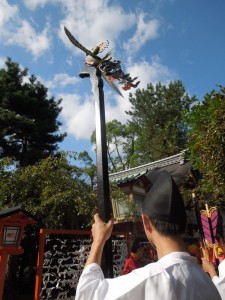
Poles are a common part of Shinto processions, symbolising the connection between this world and the other
One Shinto priest considered the pole “for the dead to go to the afterlife” (perhaps a kind of axis mundi); torches and lanterns light the path for the dead; banners “show that the dead is coming to Yomi no Kuni; “brooms clean and purify the path to Yomi no Kuni for the dead.”
A 1995 funeral procession for a Shinto priest in Shiga prefecture included the following members:
1 . Two men, dressed in black suits, carrying unlit torches
2. A Shinto priest carrying a purification wand
3 . A broom-bearer
4. One man holding a yellow banner
5. One man carrying a sakaki branch
6. The chief mourner (the son who is a priest) carrying a shaku (wooden pallet).
7. A grandson carrying the memorial tablet
8. A woman in white carrying rice. The rice must symbolize purity and fertility.
9. A woman in black carrying the photo
10. A lantern-bearer
1 1 . The coffin, carried by six men
12. Another lantern-bearer
13. At the end walked the widow and all the other mourners.
This procession did not have far to go, and the participants walked in a straggly line from the building to the hearse.
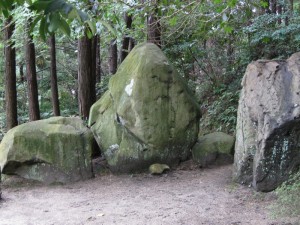
Myth relates that when Izanami dies, she goes to the land of Yomi (Yomi no kuni). This rock near Izumo is said to be the one used by Izanagi to block this world off Yomi from this world.
Shinto funeral processions used to be held at night. Now processions are conducted in daylight, with the torch-bearers and lantern-bearers providing no light with their unlit torches and lanterns. There are several ways to understand the importance of night for a Shinto funeral: 1. The darkness conceals the impurity of death and limits its range. 2. Because the land of Yomi is the opposite of the living, in order for the dead to arrive there during the day, they must leave here at night (something like a long-distance airplane flight). This explanation was offered by a Shinto priest. 3. The land of Yomi is a dark, shadowy place (recall that Izanagi had to light a torch to behold his wife’s putrefying corpse), so terrestrial night is the most appropriate atmosphere for the deceased’s move to a new environment.
Before the departure, the mourners may gather around the coffin to take one last look at the deceased. As at a Buddhist funeral, they may each put a flower (usually a chrysanthemum) into the coffin as a final offering to the deceased. They then may use a stone to pound the coffin lid shut (although this custom is considered by some to be a Buddhist practice, it is also often performed at Shinto funerals). Grasping the stone, the living use their own hands to seal the deceased into his coffin and segregate him from the realm of the living.
Meanwhile, back at the house, relatives and other mourners who have not gone to the crematorium dismantle the funeral altar. At the very time that the body is being cremated, relatives back at the house are arranging offerings and preparing the new residence of the spirit of the deceased. Priests ritually purify the ancestral altar, the family, other mourners, the interior and exterior of the house, and the grounds.
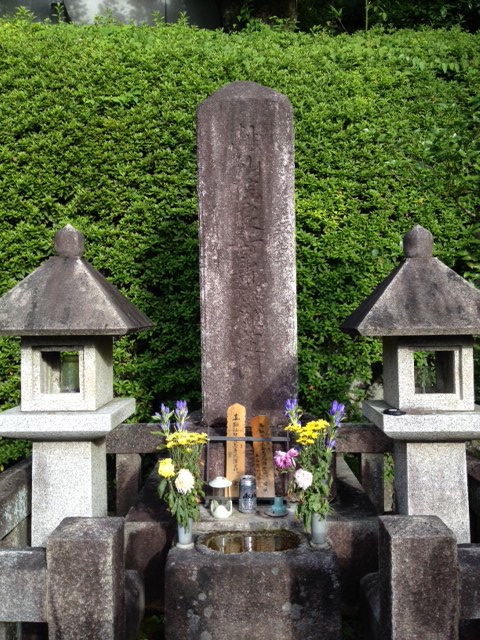
Chrysanthemums are used for graves and as a flower for commemorating death

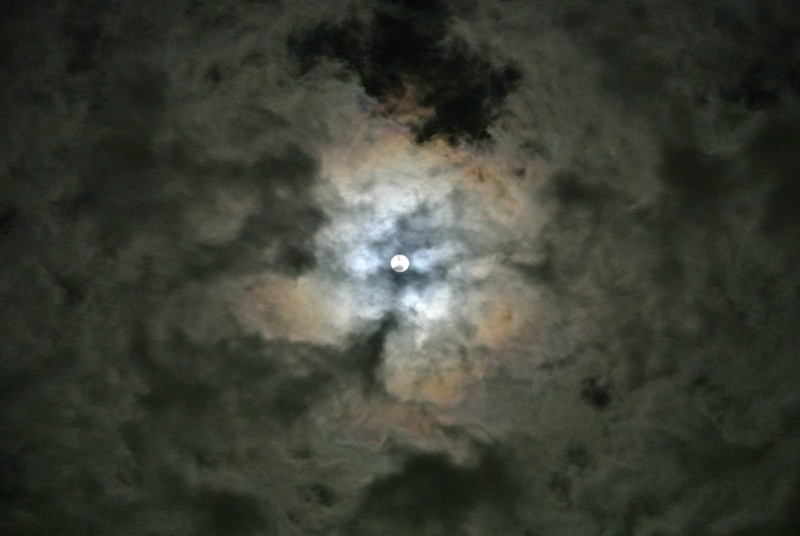

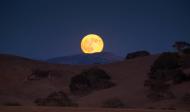


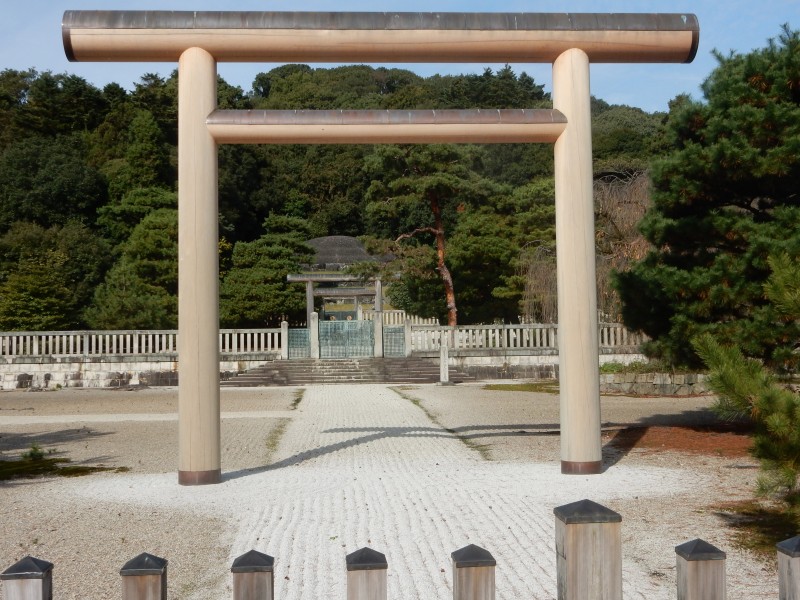
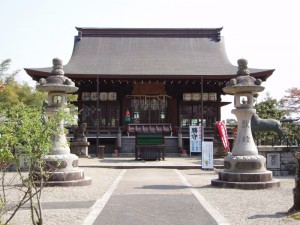
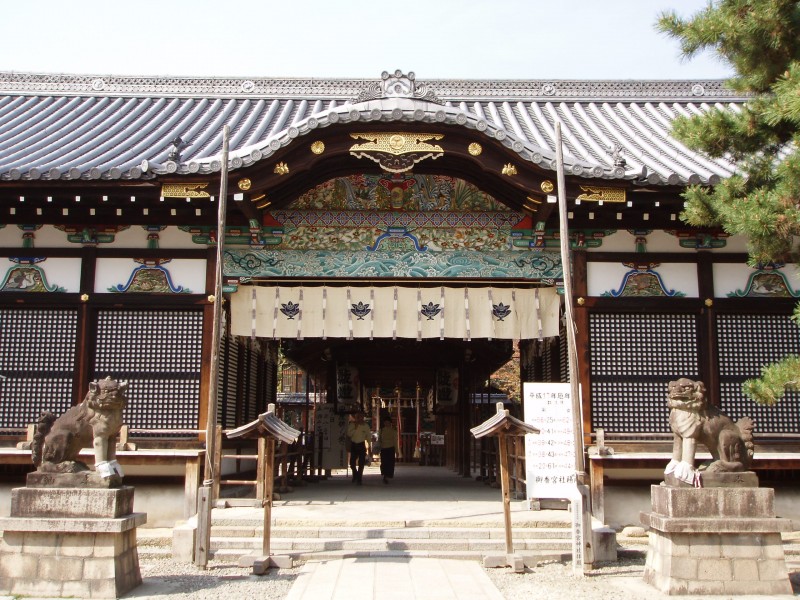






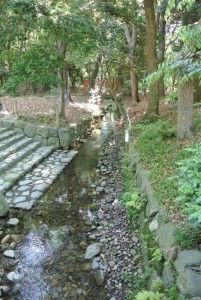
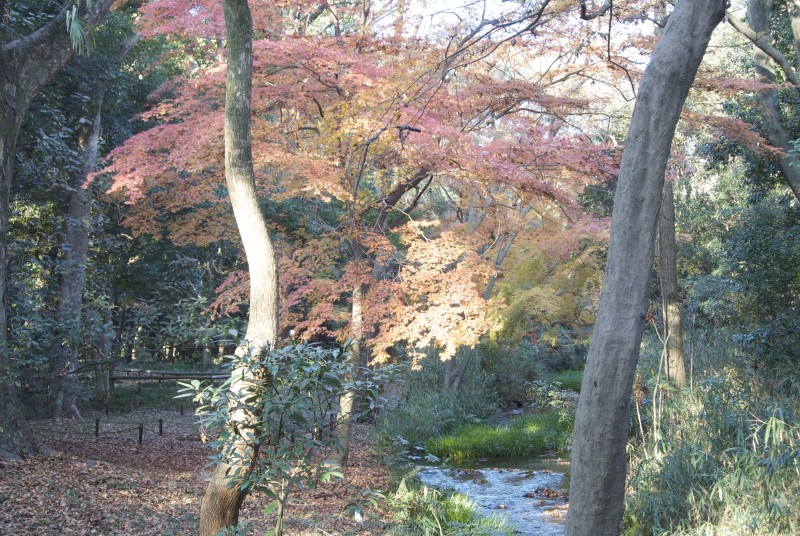

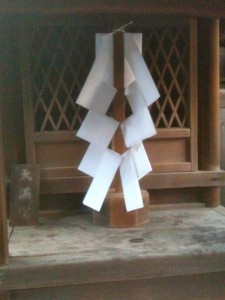
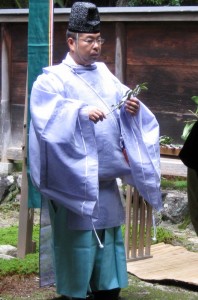

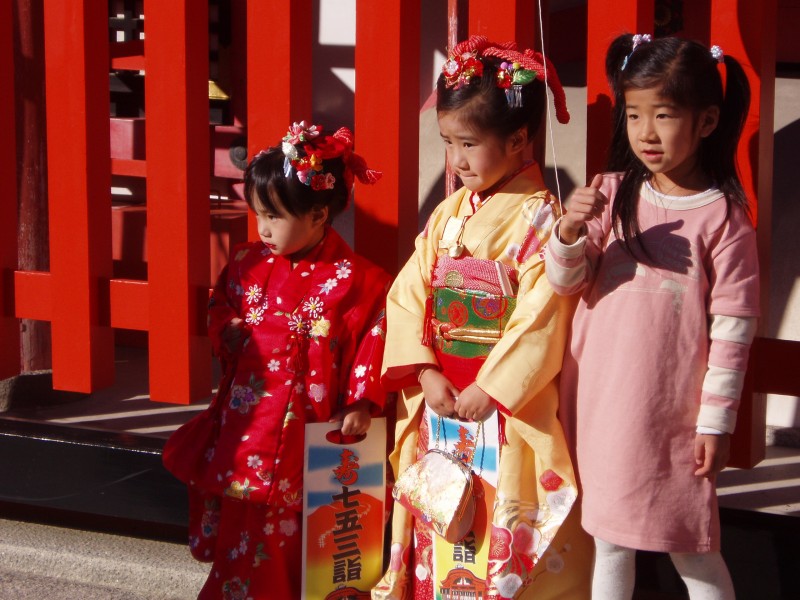 The magical symbolism of seven, five and three is derived from China, thanks largely to the teachings of Daoism with its favouring of odd numbers and distaste for static symmetry. According to Chinese tradition, the world was created with 1 (which is why 1/1 is so powerful), established at 3, completed at 5, prospered at 7, and ended with 9 (last single digit). Hence the sky is 90,000 li from the earth, as it’s the limit of the cosmos. It explains one thing that always puzzled me, namely why 1/1, 3/3, 5/5, 7/7. 9/9 are holidays of some kind in Japan, but there’s nothing on 11/11.
The magical symbolism of seven, five and three is derived from China, thanks largely to the teachings of Daoism with its favouring of odd numbers and distaste for static symmetry. According to Chinese tradition, the world was created with 1 (which is why 1/1 is so powerful), established at 3, completed at 5, prospered at 7, and ended with 9 (last single digit). Hence the sky is 90,000 li from the earth, as it’s the limit of the cosmos. It explains one thing that always puzzled me, namely why 1/1, 3/3, 5/5, 7/7. 9/9 are holidays of some kind in Japan, but there’s nothing on 11/11.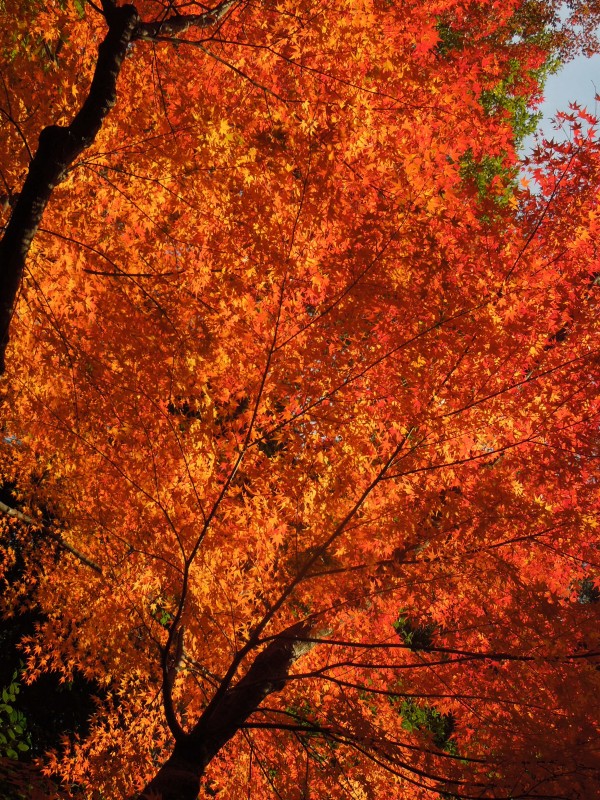 (from Green Shinto 2014)
(from Green Shinto 2014)